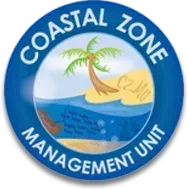Member Type Country
Barbados

The Coastal Zone Management Unit (CZMU), established in 1996, was developed from the original Coastal Conservation Project Unit created in 1983. Since 1983 we have sought to create one of the preeminent coastal zone management institutions in the Caribbean.
At present, the CZMU which is located in Warrens, St. Michael, performs a variety of coastal management functions inter alia: coral reef monitoring and research, updating the inventory of coastal resources, consultations with the Town and Country Development Planning Office (TCDPO) regarding all coastal development, beach erosion and accretion monitoring and control, updating the inventory of coastal structures, regulation of marine research, public education of ICZM, coastal conservation project designs and management, and the review of any coastal projects.
Here at the CZMU we are dedicated to advancing the knowledge, use, development, conservation and management of the coastal zone and its resources. This is our underlying functional responsibility, as the Barbados coast is essential to the lives of all Barbadians. To achieve this responsibility the CZMU therefore relies on the strong interest and support of the Barbadian public to ensure Barbados has a coast to be proud of!
Related website:
Surface of Coral Reefs: 17.5 km2
Fringing: 1.5km2
Bank/barrier: 16 km2
Graeme Hall Swamp 12/12/05; 33 ha; 13°04’N 059°35’W. A naturally created coastal wetland area with mangrove forests, a seagrass bed, and a shallow nearshore coral reef, which includes a 12-acre artificially-created lake that constitutes the largest body of inland water on the island. At least 84 bird species have been recorded, including Caribbean coot (Fulica caribaea) and Yellow warbler (Dendroica petechia), and the site’s Red mangrove (Rhizophora mangle) and white mangrove (Laguncularia racemosa) stands are the largest healthy mangrove areas left on the island. There are more than 20 fresh and brackish water fish species, among the most interesting of which are those marine species that have become isolated from the sea and become breeding residents of the lake. Fishing has been suspended pending study of the effect of the water quality for human consumption of fish and the effects on fish populations following the introduction of aggressive tilapia species. Ecotourism and environmental educational and research activities are the chief human uses of the site, which has been proposed as a National Heritage Site. Ramsar site no. 1591.
Last Updated: 5 September 2024